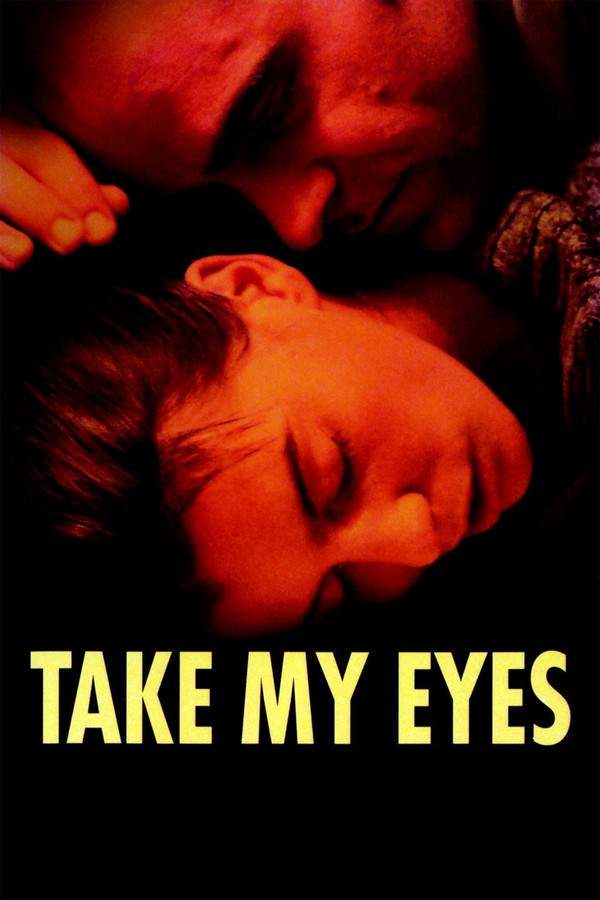
Tear This Heart Out
Year: 2008
Runtime: 107 mins
Language: Spanish
Director: Roberto Sneider
Through a young woman's eyes, the narrative follows her childhood, the Mexican Revolution, and her marriage to a revolutionary general. Written by a leading voice in contemporary Mexican feminist literature, the novel provides a haunting portrait of one woman's life while also depicting post‑revolutionary Mexico from a distinctly female viewpoint.
Warning: spoilers below!
Haven’t seen Tear This Heart Out yet? This summary contains major spoilers. Bookmark the page, watch the movie, and come back for the full breakdown. If you're ready, scroll on and relive the story!
Tear This Heart Out (2008) – Full Plot Summary & Ending Explained
Read the complete plot breakdown of Tear This Heart Out (2008), including all key story events, major twists, and the ending explained in detail. Discover what really happened—and what it all means.
Set against the backdrop of 1930s Mexico, the film follows the life of Catalina “Catín” Guzmán Ana Claudia Talancón, a young woman born into a comfortable middle‑class family in Puebla. Her world changes when she meets the calculating General Andrés Ascencio Daniel Giménez Cacho during a family outing. He showers her with attention, gifts, and praise, and what begins as a courteous interest quickly deepens into a mounting obsession. Catalina, smitten by his charm, accepts his invitation to accompany him to Tecolutla, and in that embrace she loses her virginity and begins to explore her own sexuality and curiosity about sex and intimacy.
Despite Andrés’s light misogyny and casual dismissals of her opinions about politics and other topics, Catalina finds in him a confusing mix of affection and fascination. When they return home and spend time apart, the General unexpectedly reappears with a proposal of marriage, and at only fifteen, Catalina accepts, despite her family’s gentle misgivings about the match. The moment of signing the marriage papers reveals a harsher truth: Andrés asserts ownership of Catalina, framing himself as the head of the household and the one who will shape her behavior. The warning from friends and family—that he is a dangerous womanizer—haunts Catalina, and she will come to recognize that regret only years later, even as she continues to cling to a fragile sense of devotion.
The married couple’s life moves between the city home in Puebla and the couple’s hacienda, where days unfold in what feels like an idyllic routine. Catalina enjoys riding the surrounding lands, learns to cook, and experiences a wealthier lifestyle that is defined, in part, by their intimate life. Yet beneath the surface, tensions simmer. Andrés’s plans to dam a valley and flood it to create an electric hydroelectric project threaten the livelihoods of hundreds of impoverished farmers and local villagers, a scheme that puts him at odds with others and puts Catalina’s conscience to the test. His flirtations and business dealings—one notable connection being with an American expatriate named Mike Heiss Jake Koenig—show a pattern of control and secrecy that keeps Catalina from pushing him on these issues, even as they sit heavily in her mind.
Catalina’s sense of security is tested when Andrés is briefly arrested on murder accusations and then released just a few days later, a reminder of how volatile and unpredictable life can be when politics and power are in play. She discovers she is pregnant, and her happiness is tempered by a painful moment when she sees him embracing another woman, a jarring revelation of his infidelities. To ease her loneliness during that period, she briefly takes on a relationship with a childhood friend, even as she carries their child. Time passes, and another baby joins the family, adding to the complexity of their domestic life.
As the years go by, Andrés brings two children into the household, claiming they are the offspring of his first wife, a woman he describes as saintly who died of typhus during the Revolution. Catalina, however, harbors her own doubts about the truth of that story, sensing that the reality might be different. The couple’s household becomes a blend of personal affection and political ambition as Andrés announces his candidacy for the Governor of Puebla. The campaign trail takes them across the state, with family members joining him on long trips and attending rallies where he promises progress and a brighter future for the poorer segments of society. The speeches emphasize his commitment to modernization and development, even as Catalina weighs the price of power, fidelity, and personal happiness against a life shaped by a man who remains both alluring and controversial.
Throughout this sweeping arc, the film stays close to Catalina’s evolving perspective. She experiences moments of warmth and care, but she also navigates episodes of manipulation, possessiveness, and the uneasy realization that love can be entangled with authority and political strategy. The tension between private longing and public gravity sits at the heart of the story, offering a nuanced look at a woman who tries to find her own footing within a marriage that is as much a power dynamic as a partnership. The film keeps its focus on the emotional weather within Catalina’s world—the pull of loyalty, the ache of loneliness, the pull of independence, and the occasional glimmers of autonomy that punctuate a life lived under the shadow of a larger political theater.
In the end, the narrative presents a portrait of resilience and constraint, showing how one woman negotiates desire, duty, and danger in a time of upheaval. The era’s machinations—land, wealth, political clout, and the social expectations placed on wives and mothers—are rendered with a calm, observational eye. The story invites reflection on how personal choices interact with public forces, and how a single life can illuminate the broader, often painful, realities of a nation in transformation. The film thus becomes a meditation on power, gender, and the difficult compromises that accompany love and ambition in a volatile historical moment.
Last Updated: October 09, 2025 at 10:50
Unlock the Full Story of Tear This Heart Out
Don't stop at just watching — explore Tear This Heart Out in full detail. From the complete plot summary and scene-by-scene timeline to character breakdowns, thematic analysis, and a deep dive into the ending — every page helps you truly understand what Tear This Heart Out is all about. Plus, discover what's next after the movie.
Tear This Heart Out Timeline
Track the full timeline of Tear This Heart Out with every major event arranged chronologically. Perfect for decoding non-linear storytelling, flashbacks, or parallel narratives with a clear scene-by-scene breakdown.

Characters, Settings & Themes in Tear This Heart Out
Discover the characters, locations, and core themes that shape Tear This Heart Out. Get insights into symbolic elements, setting significance, and deeper narrative meaning — ideal for thematic analysis and movie breakdowns.

Similar Movies to Tear This Heart Out
Discover movies like Tear This Heart Out that share similar genres, themes, and storytelling elements. Whether you’re drawn to the atmosphere, character arcs, or plot structure, these curated recommendations will help you explore more films you’ll love.
Explore More About Movie Tear This Heart Out
Tear This Heart Out (2008) Scene-by-Scene Movie Timeline
Tear This Heart Out (2008) Movie Characters, Themes & Settings
Tear This Heart Out (2008) Spoiler-Free Summary & Key Flow
Movies Like Tear This Heart Out – Similar Titles You’ll Enjoy
Take My Eyes (2006) Detailed Story Recap
Into My Heart (2000) Full Movie Breakdown
Tender Is the Heart (2001) Full Movie Breakdown
Straight for the Heart (1988) Story Summary & Characters
Art of Love (2021) Complete Plot Breakdown
Sex, Shame and Tears 2 (2022) Ending Explained & Film Insights
Estas ruinas que ves (1979) Spoiler-Packed Plot Recap
Enamorada (1946) Complete Plot Breakdown
Blood and Sand (1922) Detailed Story Recap
Secrets of the Heart (1997) Complete Plot Breakdown
Sex, Shame & Tears (1999) Movie Recap & Themes
The Overturning Of The Heart (1996) Complete Plot Breakdown
La Querida (2023) Movie Recap & Themes
Corazón salvaje (1968) Movie Recap & Themes
Cuando lloran los valientes (1947) Movie Recap & Themes

















